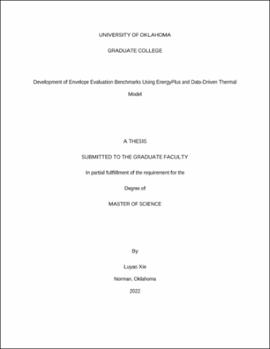| dc.description.abstract | Residential buildings account for a large portion of the consumption of the global energy and total energy by end use. To mitigate the rising trend of energy consumption, residential buildings show a huge potential by improving their energy efficiencies, thus achieving energy saving. Moreover, the envelopes of the residential building, as one of key factors in the energy consumption of a building, are closely related to building energy saving, as it closely determines how much heat is transferred between indoor space of the building and its outdoor environment. Even though the challenges in how to judge the performance of the residential envelopes, especially evaluation of the overall building envelope via model-based data-driven and measurement-based methods, have been addressed by current studies and still have their limitations in comparison with ground truth, a method to benchmark the envelope performance evaluation is still lacking and urgently needed. Therefore, a benchmarking method using both building energy and thermal network models is proposed in this study.
Specifically, this study first proposes a calibration method that utilizes both EnergyPlus and simplified 2R2C models. The EnergyPlus models are used to generate simulated data that are utilized in the simplified 2R2C model training. Moreover, this study also creates an excel dashboard, along with the the EnergyPlus and simplified 2R2C models, for the calibration process. Then three representative years of American Society of Heating, Refrigerating and Air-Conditioning Engineers (ASHRAE) standards are selected to the minimum thermal property requirement of residential building envelope and utilized in the calibrated EnergyPlus models. In the next step, a benchmarking method is proposed to determine the minimum required Tau value (time constant of building envelope) for a specific year of a residential building envelope. That is, different years of houses need to meet the minimum thermal property requirement of residential building envelope defined by ASHRAE standards. Lastly, the performance evaluation benchmarking process can be done with the determination of thermal properties identified by the simplified 2R2C model trained using simulated data from the calibrated EnergyPlus model.
Overall, this research successfully proposes an efficient calibration method to calibrate EnergyPlus modes used for residential buildings, introduces quantitative study and performance analysis of a calibration method that utilizes building thermal network models, and develops a benchmark method and shows investigation and analysis for building envelope performance evaluation. Therefore, this research contributes the knowledge of benchmarking the envelope performance evaluation using both EnergyPlus and data-driven thermal model for residential buildings. | en_US |
